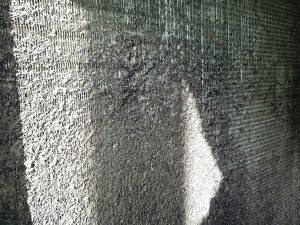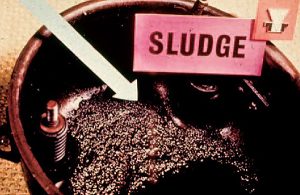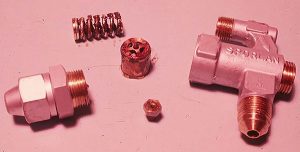
An Ounce of Prevention
May 25, 2021 | By Dave Demma
The value of maintenance programs and the consequences of not maintaining A/C systems.
“You can pay me a little bit today … or you can pay me a lot more later on.”
As funny as that statement might sound, this was a common phrase amongst the technicians I worked with, and it was representative of that faction of equipment owners who never wanted to invest in a preventative maintenance program.
I would liken that sentiment to the owner of an expensive car who refuses to have his/her car serviced on a regular basis. Sure, if the car isn’t abused, you might cheat the odds and go for a few years without a serious breakdown. But mechanical parts and devices all share a common fate—they wear, and they will fail at some point in time. That point comes sooner with a lack of maintenance.
In most climates the typical air conditioning system will be idle for some portion of the year. This is not to suggest an idle system will be subject to some type of failure before the weather warms up, but performing a spring equipment check will ensure that when the heat arrives, the system is working properly.
Checklist
There are several items that should be included in the typical preventative maintenance checklist:
- Extra resistance in electrical connections or points of contact can lead to excessive voltage drop, which can cause voltage drop, overheated wiring/melted insulation, occasional fires, and ultimately motor failures. All electrical connections should be checked for tightness, and motor contactor contacts should be inspected to verify that they’re not excessively burned/pitted. If so, the contactor should be replaced.
- Motors outfitted with sealed bearings do not require field lubrication. Motors not utilizing sealed bearings should be lubricated periodically, in accordance with the manufacturer’s recommendations.
- Technicians cannot assume that homeowners, or building owners, are replacing air filters on a regular basis. These should be checked, and replaced if necessary.
- Check thermostat setting and calibration.
- Inspect condensate drain and drain pan. Verify that drain is clear, that drain pan is clean, and treat with algaecide.
- Inspect ducting for air leaks, and repair as necessary.
- Start system, check operating pressures, compressor amperage, condenser and evaporator fan motor amperage.
Heat Transfer Efficiency
In addition to the above-mentioned checks, there are two additional checks which can have a huge impact on system efficiency, performance, system energy consumption and equipment longevity.
As has been stressed in my previous articles over the years, the purpose of the vapour-compression refrigeration cycle is to transfer heat from the refrigerated (or conditioned) space to the refrigerant, and eventually to some location outside of the refrigerated (conditioned) space. The two heat transfer surfaces which facilitate that process are:
- Evaporator, which allows the heat content of the air in the space to be transferred to the saturated refrigerant flowing through the evaporator tubes, and
- Condenser, which allows the heat absorbed in the space (plus the heat added during the compression process) to be rejected outside the space.
It goes without saying that the proper selection of equipment and components is essential to provide the design temperature in the refrigerated (conditioned) space. It should also go without saying that the two heat transfer surfaces need to operate at peak efficiency to maintain the design temperature in the refrigerated (conditioned) space.
The number one killer of evaporator and condenser capacity and efficiency is dirt, debris or anything else that would inhibit airflow through the fin-tube construction of both the evaporator and condenser.
A study by the U.S. EPA (Environmental Protection Agency) some years ago found that a relatively small film of dirt (0.042-in. thick) on a heat transfer surface resulted in a 21% loss in heat transfer efficiency.
This condition has to be one of the easiest to detect. All it requires is visual inspection. Cleaning a heat transfer surface is relatively easy as well. A brush to remove the larger film, chemicals that aid in the cleaning process, CO2 to blow the debris out of the fins, or for larger outdoor condensers a garden hose.
Consequences
Now, if this is one of those equipment owners that doesn’t want to pay for the maintenance, here are the potential issues:
Dirty Evaporator:

Dirty evaporator hindering efficiency.
The dirt and debris blocks the air flow path, which results in a reduction in air flow through the fin-tube bundle. Since the ability to transfer heat from the air to the refrigerant flowing through the evaporator tubes is proportional to air flow, the air flow reduction results in a reduction in heat transfer.
The evaporator is no longer capable of removing the heat necessary to maintain the desired temperature in the space. The equipment will undoubtedly operate for longer periods of time, resulting in higher power consumption (and higher electricity bills). If the equipment has greater capacity than the design load, the space temperature will likely still be maintained. If the equipment is marginally sized to begin with, it’s doubtful the space temperature will be maintained at the desired level.
The thermostatic expansion valve (TEV) will vary the refrigerant mass flow entering the evaporator in response to the superheat condition at the outlet of the evaporator. TEVs have the ability to throttle down during lower load conditions, but there is a limit to how far they can throttle down and still maintain a superheated condition at the evaporator outlet. If the air restriction is severe enough, causing a severe reduction in load, the TEV could reach a point where it’s incapable of maintaining a superheated condition at the evaporator outlet. This can result in some amount of liquid refrigerant flowing to the compressor inlet, causing damage to the compressor.
As mentioned above, the reduced load condition will cause the TEV to throttle closed in an effort to maintain the superheat setpoint. This results in a reduced refrigerant mass flow. If the evaporator is located below the compressor, a minimum refrigerant suction vapour velocity is required to bring the oil back to the compressor. As the TEV throttles closed, the reduction in mass flow will result in a lower suction vapour velocity.
At some point, the velocity may reduce to the point where the oil is no longer able to return to the compressor. Smaller condensing units with hermetic or scroll compressors are not equipped with a safety switch that will turn the compressor off during a low oil level condition. Again, there is potential for compressor damage/failure.

Reduced air flow through the condenser reduces the condenser capacity.
Dirty Condenser:
A similar reduction in air flow through the condenser fin-tube bundle reduces the condenser capacity. The result is a system that operates at an elevated condensing pressure. This increases the compression ratio, which reduces compressor capacity.
Viewing the Btu capacity of a Copeland M/N 2DA3-075E-TFD at varying condensing temperatures illustrates this:
- 40F SST and 90F SCT 120,000 Btu
- 40F SST and 100F SCT 113,000 Btu
- 40F SST and 110F SCT 104,000 Btu
- 40F SST and 120F SCT 97,000 Btu
- 40F SST and 130F SCT 90,000 Btu

Sludge in a compressor crankcase.
Elevated operating temperature from reduced compressor capacity will affect the oils’ ability to properly lubricate. Between 310F-330F mineral oil will lose the lubrication film between piston rings and the piston cylinder, resulting in ring wear. In addition, the higher compression ratio exerts a greater force on the piston wrist pin bearing and connecting rod bearings. Extended periods of operation under this condition will reduce compressor life.
Compressor oils will begin decomposing at elevated temperatures (350F for mineral oil, and 400F for POE). As the temperatures for mineral oil and POE rise above their respective decomposition thresholds, the oil will begin to polymerize; a process which results in the oil molecules combining into larger and larger molecules.

Decomposed oil restricts thermostatic expansion valve operations.
The oil is first transformed into a dark thick oil, then a sludge, and finally a solid powder. Not only does this reduce the lubricating ability of the oil, it also has the potential to plug up strainers, filter-driers, smaller orifices in control valves, lubrication ports in the compressor, all with destructive and costly results.
Fair Warning
Now, the next time your customer tells you that they just can’t afford to have you perform any preventative maintenance on their equipment, you can confidently rehearse why he/she absolutely cannot afford to forego maintaining their equipment.
But, in the event that your powers of persuasion are insufficient to change their mind, remember the phrase:
“You can pay me a little bit today, or you can pay me a lot more later on,” with the added caveat, “But please remember that I tried to warn you.” <>

 Dave Demma holds a degree in refrigeration engineering and worked as a journeyman refrigeration technician before moving into the manufacturing sector where he regularly trains contractor and engineering groups. He can be reached at ddemma@uri.com.
Dave Demma holds a degree in refrigeration engineering and worked as a journeyman refrigeration technician before moving into the manufacturing sector where he regularly trains contractor and engineering groups. He can be reached at ddemma@uri.com.


